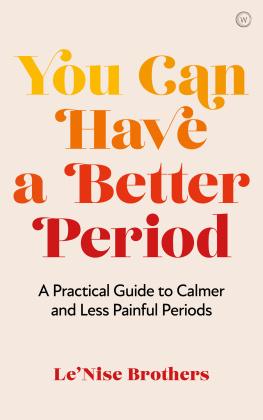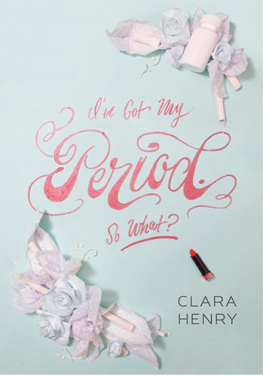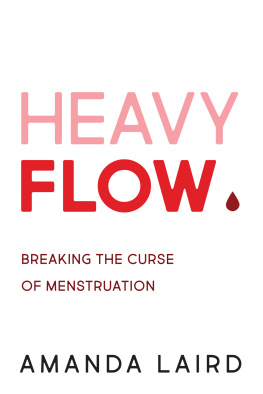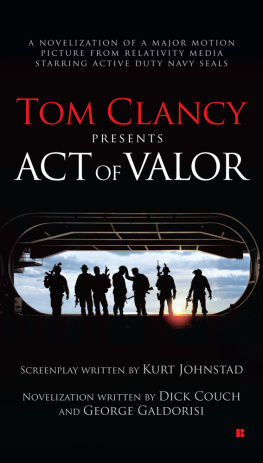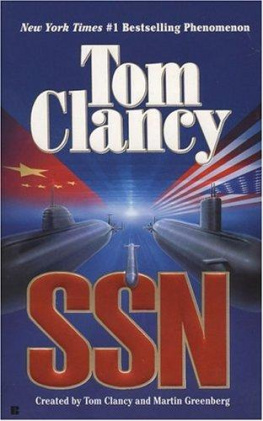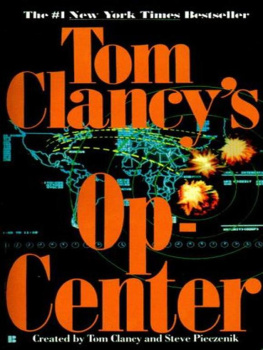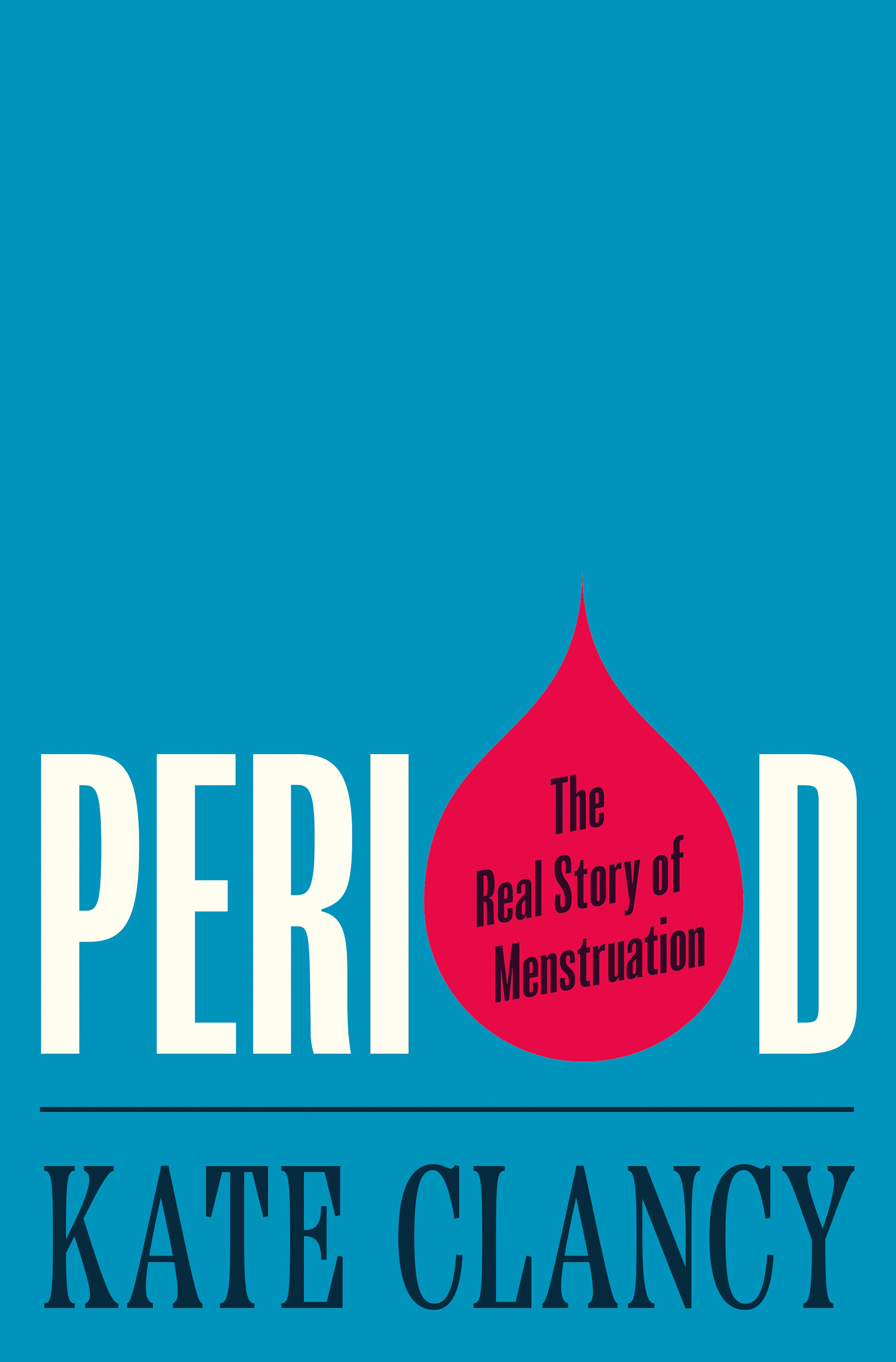PERIOD
PERIOD
The Real Story of Menstruation
KATE CLANCY
PRINCETON UNIVERSITY PRESS
PRINCETON & OXFORD
Copyright 2023 by Princeton University Press
Princeton University Press is committed to the protection of copyright and the intellectual property our authors entrust to us. Copyright promotes the progress and integrity of knowledge. Thank you for supporting free speech and the global exchange of ideas by purchasing an authorized edition of this book. If you wish to reproduce or distribute any part of it in any form, please obtain permission.
Requests for permission to reproduce material from this work should be sent to
Published by Princeton University Press
41 William Street, Princeton, New Jersey 08540
99 Banbury Road, Oxford OX2 6JX
press.princeton.edu
All Rights Reserved
Library of Congress Control Number: 2022944663
ISBN 9780691191317
ISBN (e-book) 9780691246826
Version 1.0
British Library Cataloging-in-Publication Data is available
Editorial: Alison Kalett, Hallie Schaeffer
Jacket Design: Karl Spurzem
Production: Jacqueline Poirier, Lauren Reese
Publicity: Julie Haav, Kate Farquhar-Thomson
Copyeditor: Wendy Lawrence
CONTENTS
- vii
- Introduction
Taking the Mystery Out of Menstruation
PREFACE
THERE WERE a few key things I learned about periods as an adolescent. From fifth-grade health class, I learned that menstruation signaled a failed menstrual cycle with no baby. From my pediatric nurse practitioner Dr. Debbie, I learned that periods make you iron deficient. And from the world around me, I learned that I must hide all signs that I menstruated or face deep, crushing shame. This last lesson led to my acquiring the ability to plaster a smile on my face while passing a clot and developing an obsessive habit of checking to make sure no menstrual blood is visible anywhere on my body.
That warning from Dr. Debbie imprinted itself on me as well, to the point that as a young adult I went down a rabbit hole reading as much as I could about iron and menstruation. It even motivated a small project I undertook as part of my dissertation in graduate school. Using samples from my fieldwork in rural Poland, I performed an analysis comparing my research participants endometrial thickness (an ultrasound measurement of how much endometrium, or uterine lining, you have) with their red blood cell and hemoglobin levels (both indicators of iron status). What I found was the opposite of what was medically assumed: the thicker your endometrium, the better your iron status.
This would be the first of many moments when I noticed an assumption about periods that, with even the gentlest of prodding, completely disassembled. And I could not help but also notice that underlying these assumptions was a certain belief about what people, organs, or processes carry scientific importance, especially in my discipline of anthropology. The origin stories in my field include such winning narratives as White people are the pinnacle of the human race, and Men were the hunters and their behavior drove all of human evolution. There were anthropologists already contesting these narratives by the time I was in college and graduate school, but even thoughtful critiques were met with contempt by many whom I read in the literature and met at conferences. I had one professor who only assigned women anthropologists in his one feminist week of the semester, but we had to read these works alongside scornful critiques. In my reflection assignment that week, I wrote that it seemed like he was setting up these authors to be mocked. In response, he read my comments aloud to the class and laughed. That moment created in me my own personal spite project to prove a different type of science is possiblethat someone like me, asking the questions I ask, could be a professor. A PhD and a stint teaching college composition later, and I became a professor through a combination of fortune and privilege. Ive been studying menstrual cycles off and on ever since.
When I decided I wanted to write this book, I was years deep into a different spite project that had grown to epic proportions: someone dared to tell me that uncovering discrimination in the sciences was a witch hunt. It started with a collaboration to study sexual harassment in the field sciences, which led to additional projects in astronomy and the planetary sciences, then undergraduate physics, and then a major consensus report, testifying in front of Congress and flying all over the country for a year disseminating the results of the report.
As a survivor of sexual trauma multiple times over, the work I was involved with was challenging. I was fueled by it, but I also hated it. I developed vicarious trauma from all of the stories of assault, harassment, and discrimination I absorbed as both researcher and advocate, and it seeped into and mixed with my own experiences. I started heavily compartmentalizing my work and home life. While there were many wins, there were too many losses: most frustrating was realizing the changes institutions needed to make were not the ones they wanted to hear about. They wanted to sponsor a few talks, add online training. I wanted them to overhaul the incentive structures that permit bad behavior and stop thinking so short term with their risk management.
After the birth of my second child, I struggled to see any physical touch as kindly intended (except from my infant, barely). Men were looming and frightening, even my own partner. Therapy got me clear enough on things to realize I needed to extricate myself from sexual harassment research and advocacy work, at least for a time. All I wanted to do was get back to the whole reason I became an anthropologist and study periods again.
The timing of the creation of this book and my sabbatical the year after my second child was born saved my life. I wanted to be a nerd again. I wanted to read about spiral arteries. I wanted to look at ultrasounds. Like so many of the sexual harassment survivors Ive interviewed over the years, I just wanted to get back to my science. This project allowed me to go back to being the academic who eagerly shares how tissue remodeling works in the uterus to friends, family, and strangers. I started a podcast as an excuse to interview all sorts of dream guests who could teach me even more.
At the same time, in getting back to menstruation science I also found I couldnt write a straight science book. It was impossible, not just because in writing about menstruation I found I could not escape the eugenic history of anthropology and gynecology or even how that history reverberates and affects reproductive justice in the present. It was because there are far more interesting questions to ask, wondrous and curious and weird things to explore, when we are able to step away from how the historical study of menstruation and menstrual cycles has shaped our knowledge. There are waves of competition between ovarian follicles.
Menstruation is a wild process that should captivate and delight. It offers up so many lessons in terms of how we understand bodily autonomy, sexual selection, even tissue engineering. It is strange, then, that instead of being something so fundamental to science education as Mendels peas or dinosaur bones or the planets of our solar system, it gets at best a brief mention in health class. Because of the history of how knowledge is produced, disseminated, and used in dominant culture, two things have happened instead. Within science and especially medical structures, knowledge is power and therefore often withheld; within political structures correct knowledge is rarely the point. Fertility control has been on the agenda in gynecology and in politics for decades, if not centuries. So we know little about menstruation, and whats worse, what we often know is wrong.


